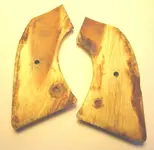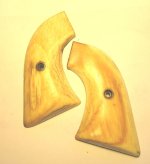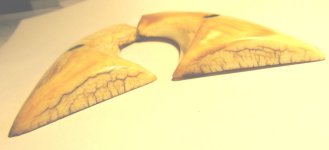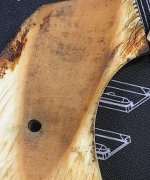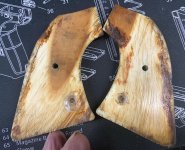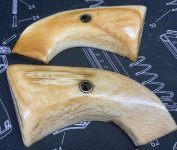pistol-pete
Hero Member
- Nov 4, 2012
- 625
- 697
- Detector(s) used
- 1970 Garrett Hunter, Garrett Ace 350, Garrett AT Gold, Garrett pinpointer
- Primary Interest:
- Metal Detecting
A bit different here. Can anyone out there tell me for sure if these grips are Ivory or bone? Had them over 70 years and never knew for sure, Thnaks in advance.


